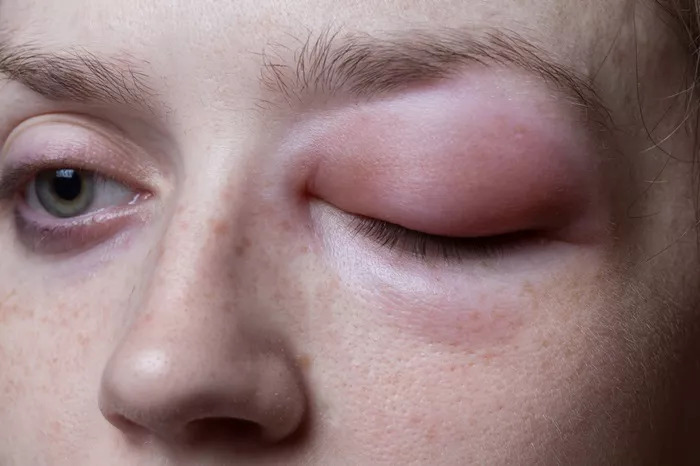Spring is a beautiful season full of blooming flowers, warmer weather, and longer days. However, for many people, spring also brings the discomfort of allergies. Allergies in spring, commonly triggered by pollen from trees, grasses, and flowers, can cause sneezing, itchy eyes, a runny nose, and more. If you suffer from spring allergies, you know how difficult it can be to enjoy the season when your body is constantly reacting to allergens. In this article, we will explore practical strategies to help you avoid spring allergies and enjoy the season with less discomfort.
Understanding Spring Allergies
Spring allergies, often called hay fever or allergic rhinitis, occur when your immune system overreacts to harmless substances like pollen. Pollen is a fine powder produced by plants to fertilize other plants of the same species. During spring, trees, grasses, and flowers release large amounts of pollen into the air, which can trigger allergic reactions in sensitive individuals. These reactions happen when your immune system mistakes pollen for a harmful substance and produces antibodies to fight it.
Common allergens during spring include:
Tree pollen (oak, birch, maple, cedar)
Grass pollen (timothy grass, ryegrass, Bermuda grass)
Flower pollen (dandelions, daisies, lilies)
In addition to pollen, other factors such as dust mites, mold, and pet dander can worsen allergies in the spring. Now that we understand what causes spring allergies, let’s explore how to avoid them.
1. Monitor Pollen Counts
One of the best ways to avoid spring allergies is to stay informed about pollen levels in your area. Most weather apps and websites provide pollen forecasts, which give you information about how much pollen is in the air on a given day. By monitoring the pollen count, you can plan your activities to avoid peak pollen hours.
How to Monitor Pollen Counts:
Use apps: Apps like “Pollen.com” or “Weather.com” provide daily pollen counts and allergy forecasts.
Check local news: Many local news stations also report on pollen levels during springtime.
Set alerts: You can sign up for notifications that alert you when the pollen count is high in your area.
Best Times to Go Outside:
Pollen levels are typically highest in the early morning (5 AM to 10 AM) and on windy days.
The best time to go outside for allergy sufferers is later in the evening or after a rainfall, which helps clear pollen from the air.
2. Keep Windows Closed
While fresh air is lovely, it can also bring pollen into your home. Keeping your windows closed during high pollen seasons is a simple but effective way to prevent allergens from entering your living space.
Why Should You Keep Windows Closed?
Prevent pollen exposure: Keeping windows closed helps reduce the amount of pollen that can enter your home.
Minimize airborne allergens: Pollen, dust mites, and mold can all be brought in through open windows. Keeping them shut limits these allergens.
If you have an air conditioner, use it instead to cool down your house. Make sure the air filters are clean to prevent pollen from circulating indoors.
3. Use Air Purifiers
Air purifiers with HEPA (High-Efficiency Particulate Air) filters can help reduce the amount of pollen and other allergens in your home. These devices are designed to capture small particles, including pollen, pet dander, and dust, making the air inside your home cleaner.
Benefits of Air Purifiers:
Cleaner air: HEPA filters can remove up to 99.97% of airborne particles, including pollen.
Improved indoor air quality: Reducing allergens indoors can help alleviate allergy symptoms.
Less exposure: Air purifiers reduce your overall exposure to allergens, especially in bedrooms and living areas.
Make sure to choose an air purifier with a filter designed to capture pollen and other allergens. Also, remember to regularly replace the filters to maintain their effectiveness.
4. Shower After Being Outdoors
When you spend time outdoors during the spring, pollen can stick to your skin, hair, and clothing. This can lead to further exposure to allergens once you come inside. To minimize this, it’s essential to shower and change your clothes after being outside.
Why Showering Helps:
Removes pollen: Pollen can stick to your hair, skin, and clothing, which can cause further allergic reactions. Washing it off helps reduce exposure.
Prevents indoor allergens: If you don’t wash the pollen off, you may inadvertently bring it indoors, where it can circulate and worsen allergies.
Tips for Effective Showering:
Wash your hair: Pollen can collect in your hair, so it’s important to wash it thoroughly.
Change your clothes: After outdoor activities, change into clean clothes to avoid tracking pollen indoors.
5. Keep Your Home Clean
A clean home is essential for reducing allergens. Regular cleaning can help remove pollen, dust, and other allergens that may accumulate in your living space. Make sure to focus on areas where allergens are most likely to gather, such as carpets, rugs, and bedding.
Cleaning Tips for Allergy Relief:
Vacuum regularly: Use a vacuum cleaner with a HEPA filter to remove pollen, dust, and pet dander from carpets and floors.
Wash bedding frequently: Wash your sheets, pillowcases, and blankets in hot water to remove pollen and dust mites.
Dust with a damp cloth: Dry dusting can stir up allergens. Instead, use a damp cloth to wipe down surfaces and reduce the spread of dust.
In addition to regular cleaning, consider using allergen-proof covers for pillows and mattresses to prevent dust mites from accumulating.
6. Take Allergy Medications
If you’re still struggling with allergy symptoms despite taking preventive measures, consider using allergy medications. Over-the-counter antihistamines, nasal sprays, and eye drops can help alleviate symptoms.
Common Allergy Medications:
Antihistamines: These medications block histamines, which are responsible for allergy symptoms like sneezing and itching. Examples include loratadine (Claritin) and cetirizine (Zyrtec).
Nasal corticosteroids: These sprays help reduce inflammation in the nasal passages, providing relief from congestion and runny noses. Examples include fluticasone (Flonase) and budesonide (Rhinocort).
Decongestants: These medications help reduce nasal congestion by narrowing the blood vessels in the nasal passages. However, they should not be used for more than a few days to avoid side effects.
If you have severe allergies, your doctor may recommend prescription medications or allergy shots (immunotherapy) to help reduce your symptoms over time.
7. Wear Sunglasses and a Hat
Wearing sunglasses and a wide-brimmed hat can help protect your eyes and face from pollen when you’re outside. Pollen can easily stick to your face, eyes, and hair, so covering these areas can help reduce your exposure.
Benefits of Sunglasses and Hats:
Protect your eyes: Sunglasses act as a barrier between your eyes and pollen, helping to reduce itching and irritation.
Cover your hair and face: A wide-brimmed hat can prevent pollen from landing on your face and hair.
More comfort: These accessories can make spending time outdoors more comfortable, especially during high pollen seasons.
8. Keep Your Pets Clean
If you have pets, they can also bring pollen into your home. Pollen can stick to their fur and paws, which can lead to increased allergens in your living space.
How to Keep Pets Clean:
Bath your pets regularly: Give your pets a bath to remove any pollen that may have collected on their fur.
Wipe their paws: After outdoor walks, wipe your pet’s paws with a damp cloth to remove pollen.
Brush their fur: Regular brushing helps remove pollen and other allergens from your pet’s coat.
By keeping your pets clean, you can reduce the amount of pollen and dander in your home.
9. Eat a Healthy Diet
A healthy diet can support your immune system and may help reduce allergy symptoms. Eating foods rich in antioxidants, vitamins, and minerals can help boost your body’s ability to cope with allergens.
Foods to Include in Your Diet:
Fruits and vegetables: They are high in antioxidants, which can help fight inflammation and support the immune system.
Omega-3 fatty acids: Foods like salmon, walnuts, and flaxseeds contain omega-3s, which may help reduce inflammation.
Local honey: Some people find relief from allergies by consuming local honey, which may help their immune system become accustomed to local pollen.
Consult with a healthcare provider or nutritionist to develop a diet that supports your allergy management.
Conclusion
Spring allergies can be a real challenge, but with the right strategies, you can reduce your exposure to allergens and manage your symptoms more effectively. By monitoring pollen counts, keeping windows closed, using air purifiers, staying clean, and taking allergy medications when necessary, you can enjoy all that spring has to offer without being overwhelmed by allergies. Remember, it’s important to consult with your doctor if your symptoms persist or worsen, as they can provide personalized advice and treatments to help you cope with your allergies.
With these tips, you’ll be better prepared to face the spring season with confidence and comfort!
Related Topics

































